Singles
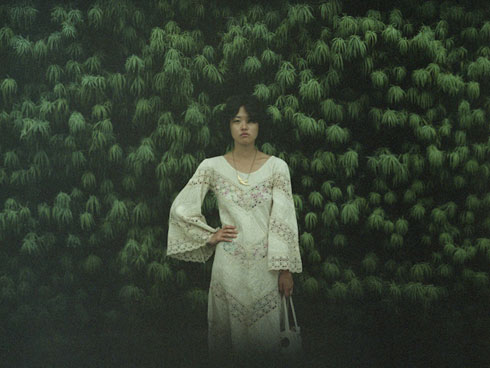
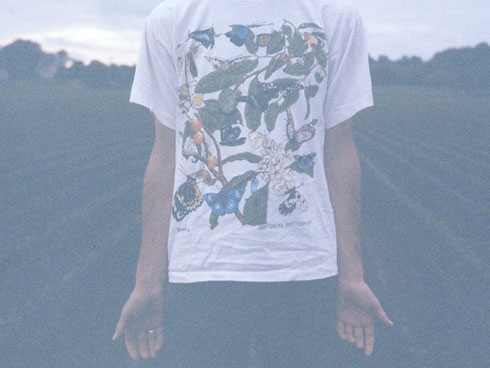
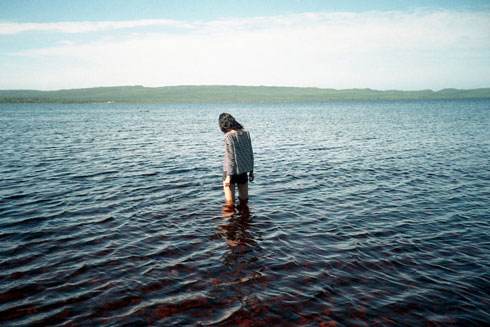
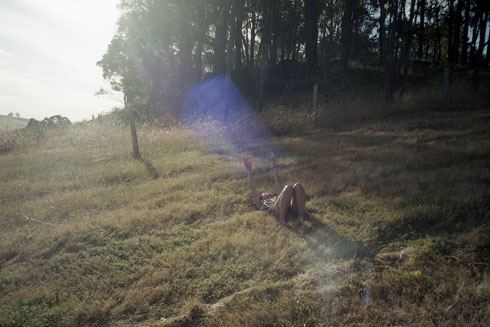
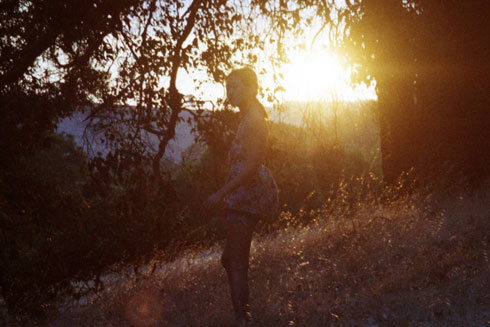
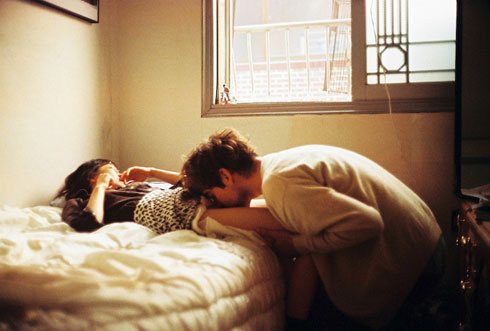
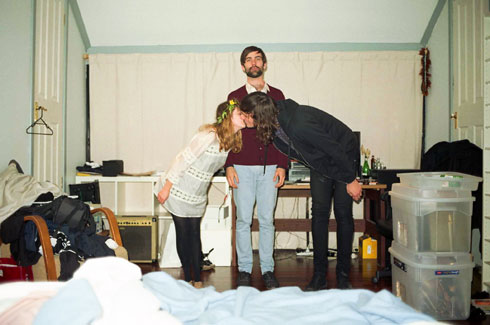
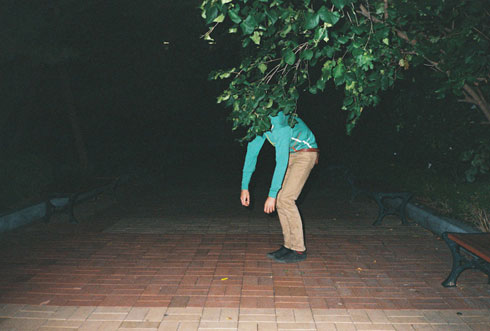 Text: Danielle Marsland Images: Jackson Eaton
Text: Danielle Marsland Images: Jackson Eaton
There is a massive immediacy that has come to exist online in recent years – it seems self-restraint is the only thing standing between one’s personal life and one’s personal life, made public. Websites, blogs, photologs, Tumblrs – so many ways to let people in. And so many people who want to! When you can’t see or judge the depth of who or what is following your movements online; it’s easy to feel free to share more and more information, to break down barriers between yourself and your viewer, or to just pretend that barriers don’t exist at all.
The photographs of Jackson Eaton have immersed many over the years, not so much through their being prolific, but because the nature of their subject is directly associated with Eaton’s own personal life, immediately triggering intrigue in strangers near and far for the unfettered intimacy that they offer freely to the viewer. A stint a few years back with a fellow photographer and live-in lover in Korea doubled the exposure (figuratively and literally).
Doing all this from afar, Eaton never had to answer to anyone except his online public; who were intangible at best. However, last year saw Eaton re-insert himself into his small hometown, and thus face the challenge of reconciling that foreign, online, seemingly untouchable photographic world with one capable of being dissected and reacted to by friends, family and viewers now at arms length. And now, the ultimate test of these change in circumstances: Eaton’s fourth solo exhibition, Single, will see him document with Fade-To-Black polaroids a night spent in an art gallery with a stranger, in his hometown. What better time to speak with Jackson Eaton about the reality of the worlds he inhabits: the real, the constructed, and the limbo in between.
Danielle Marsland: Your latest photographic project explores the notion of being ‘single’, an idea which you appear to be putting forth as a contrast to your previous photos, which explored relationships/togetherness. A close inspection of your photos reveals the idea of being ‘single’ or ‘alone’ as having been there the whole time. There are a lot of images of lone figures versus landscapes, individuals framed against the bigness of the world, sometimes even lacking identity in the face of it (ie obscured faces, backs to the camera). Is it possible that, even whilst you were in a relationship, your work still spoke of an overarching solitude?
Jackson Eaton: Yes, certainly. I’ve never felt my work explored togetherness or love as some kind of ideal or harmonious state, despite it sometimes being interpreted that way. Even in relationships I think we often struggle with how pure a union is or ever can be. Environment does play a large role in my photographs, even the portraits, you are right. I think this interests me because it is a way of lending perspective and context to where we find ourselves in life and how we got there. As a chronically bad decision maker, I am interested in the in-between or limbo states that exist in our lives where even if we can see how meaningful or positive something is there is still some element of doubt or dissatisfaction.
DM: Most of the subjects in your work are people you know – it seems there’s almost no one in your work that doesn’t bear some relationship to you. There’s a huge amount of vulnerability involved in being a photographer’s subject – are most people you know comfortable with you taking their picture often?
JE: I suppose there is vulnerability involved but I have never really thought about it like that. How much more comfortable would you feel having your photograph taken by someone you knew? A lot I would think. My style is (or at least was) very immersive. I would take my camera everywhere and take a lot of photos so it was just something people around me got used to. They learned what I liked from a subject and I learned who was capable (and comfortable) of providing something interesting. The barrier breaks down after a while.
DM: Temperature can be an interesting way to read your photos. A lot of the images from Korea are clear and sharp; hued in blues; cold and rainy. Others experiment with some different effects; they are warm, faded, grainy – like photos that might have been ageing in a box for a long time, or left out in the sun. What is your technique for creating, imagistically, a sense of the moods that define the environments in which you take photos?
JE: For the first couple of years in Korea I was fascinated by the incredible array of colours in the urban landscape, even at night. I used a cheap film stock that was saturated in red for the majority of that work. Back in Australia it was the opposite. The UV light just seemed to dominate and wash over everything. I became interested then in how colours had to strain to be felt and began using some expired film stocks. I think as a photographer you have to experiment but also work with what you are given.
DM: One of ee cummings’ most well-known poems, since feeling is first, casts off convention at the bequest of emotion, even going so far as to say that feeling is more important than knowledge (“the best gesture of my brain is less than/ your eyelids’ flutter”). Your widely regarded photo series, were never married, the photos from which comprised your solo show of last year, oh+ve, are heavy with feeling. As a gesture of your skill, do you think these photos are, in the end, the photographic equivalent of cummings’ understanding of ‘syntax’? (or, put more simply, is it the foolish viewer that takes these photos – which at the end of the day, are artistic constructs not unlike poems – for reality?)
JE: That is a difficult question made harder from my closeness to the work. I would say that yes, it is foolish to take these photos for reality. While I think I am a modernist at heart and partly attracted to photography because of its relationship to objectivity, I think photographic images can only ever be constructions. However, I am interested in exploring the closeness that does exist to ‘reality’ (it feels like something that should be put in inverted commas). I abhor very staged and post-produced work and try with what I do to dissolve the barrier that exists between what is out there (in the external reality) and what is in here (in my internal reality), and almost align those two worlds as if they were two images. To me that relationship feels very complicated and muddled and I think my techniques for taking photos exploit that feeling. For example, I shoot both pov and self portrait, I use film to encourage chemical abnormalities, I like dusty and faded and imprecise images, etc.
DM: Your online portfolio is divided into titled albums – how did you initially go about collating these ‘albums’, did you impose any criteria upon your photos to determine their selection?
JE: The albums are roughly chronological, with considerations made for the mood, order and style of the photos. The do reflect certain periods of the relationship that I sometimes wonder if I should explain (perhaps if I could write better). For example, ‘Australian Butterflies’ doesn’t actually contain any images from Australia but explores a time when Hasisi and I had resumed contact and agreed to meet in America for a couple of weeks. After the trip we made a plan to move to Melbourne together, but a week before the date we had booked, she decided not to come.
DM: You went and explored some of America last year with some photographer friends – Benjamin Acree and Robert Johnson – and documented your travels. How did you initially meet these guys and where did the idea for the trip spring from?
JE: I met Robert and Ben in Korea. In Korea we had a little group of photographers that we sometimes called ‘the photocrappy gang’. It wasn’t very technical, as the name suggests, but more of a group of expats intent on exploring and documenting a strange and vital place and time in our lives. After I had returned home to Australia, Robert home to the US and Ben moved on to Japan we decided it might be just a crazy enough idea to get together again for the American summer to do THAT trip everyone wants to do, i.e., drive coast to coast.
DM: What’s it like travelling with other photographers, do you have to take ‘dibs’ on potential good photos?
JE: We always conceived of the project as a group project so there was no real competition for images. If we could all shoot something we would, knowing that there was more chance of getting a great photo, but if not we would trust one of us to get it. Often we would take a walk around a small town and shoot for an hour or so before meeting back at the van. It was a lot of fun. Part of our orientation towards the trip was that we didn’t want to ‘say’ something about America. We had a few major destinations but mostly we chose highways and streets at a whim, avoided big cities and stopped whenever we saw something interesting.
DM: Some of the shots that you produced from the US trip are pleasantly surprising – in that many of the photos are portraits of strangers, or shot in an observational style, or object-focused, which isn’t really something we’ve seen a lot of thus far in your work – are you conscious of that growth in your work, as depicted in the photos?
JE: That’s right it was a big departure for me, and I wasn’t sure how comfortable I would be with it. I wouldn’t say it is a new direction because it was more about taking that specific opportunity to create a body of work with two talented photographers (who are good at that documentary style). It was an enjoyable process however and so hopefully the three of us will do it again in Australia or somewhere else. We are intending to publish a book of the America photos soon called Coney Island Malibu Beach. Maybe the Australian volume will be Rottnest Island Bondi Beach, or something.
DM: The most awful way to end an interview is probably to say ‘what’s next for you?’. So instead – what is the last photo you got developed and were you happy or disappointed with it?
JE: I got a roll developed today. On it are a few photos of a friend couple of mine for a fledgling series exploring other people’s intimacy (see photo to left). A lot of my friends are in pretty long-term relationships and it can be quite lonely when they consistently only do things together or with other couples. I wanted to kind of inject myself into their lives and play with the awkwardness of shared intimacy. It is a relatively new approach for me to think things out this much – but this is what Perth does to a man.
Jackson Eaton
Next story: Ocean Of Ink – Inkship Books



